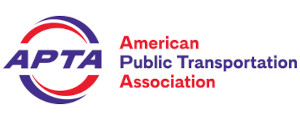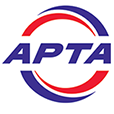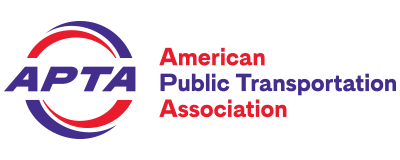The Honorable Sean P. Duffy
Secretary of Transportation
U.S. Department of Transportation
1200 New Jersey Avenue, SE
Washington, DC 20590
Subject: U.S. Department of Transportation’s Request for Information regarding Advancing a Surface Transportation Proposal that Focuses on America’s Most Fundamental Infrastructure Needs (Docket No. DOT-OST–2025-0468)
Dear Secretary Duffy,
The American Public Transportation Association (APTA) represents a $79 billion public transportation industry that directly employs 430,000 people and supports millions of private-sector jobs—including jobs at more than 2,000 suppliers from every State in the country. APTA is the voice for thousands of public transportation agencies—both urban and rural—that provide mobility for millions of Americans each day. We greatly appreciate the opportunity to respond to the U.S. Department of Transportation’s (DOT) Request for Information regarding Advancing a Surface Transportation Proposal that Focuses on America’s Most Fundamental Infrastructure Needs (Docket No. DOT-OST–2025-0468), published in the Federal Register at 90 FR 34338 on July 21, 2025.
When it comes to smart investments, the facts speak for themselves. Every $1 invested in public transportation generates $5 in long-term economic returns. In fact, 77 percent of Federal public transportation investments flow to the private sector, and every $1 billion invested creates or sustains 50,000 jobs—family-wage jobs in manufacturing, technology, and services. In cities and towns across America, miles from the nearest bus or rail stop, American workers build buses, trains, and technology that power our nation’s mobility. Whether it is saving families $13,000 a year by providing an alternative to driving, helping a company expand its U.S. manufacturing base, or investing in new technologies that can be exported to the world, public transportation drives the American economy.
APTA urges the Administration and Congress to enact a long-term Surface Transportation Authorization Act that builds upon current investment levels for public transit and passenger rail to drive economic growth, increase opportunities, and foster innovation. Specifically, APTA urges the Administration and Congress to provide $138 billion for public transit and $130 billion for passenger rail over five years.
These critical investments, together with new financing tools and streamlined requirements, will strengthen American competitiveness; create jobs and increase opportunities; ensure safe, secure, and accessible transportation for the riding public; and foster innovation by supporting cutting-edge technologies and new service-delivery approaches in the transit marketplace.
APTA is pleased to present detailed recommendations across all four of the major policy areas on which DOT seeks comment. As outlined in the draft Surface Transportation Authorization Recommendations (Recommendations),1 APTA urges the Administration and Congress to:
- Build upon current investment levels for public transit and passenger rail to drive economic growth, increase opportunities, and foster innovation;
- Advance safety, security, and accessibility for riders, workers, and communities;
- Accelerate project delivery by streamlining programmatic structures and statutory and regulatory requirements; and
- Strengthen collaborative, local decision-making by ensuring public transit is at the table.
Build upon Current Investment Levels for Public Transit and Passenger Rail to Drive Economic Growth, Increase Opportunities, and Foster Innovation
APTA urges the Administration and Congress to enact a long-term Surface Transportation Authorization Act that builds upon current investment levels and provides $138 billion for public transit and $130 billion for passenger rail over five years. These investment levels restore the purchasing power lost to inflation over the past five years and grow total public transit and passenger rail funding (including guaranteed funding) moving forward.2 These critical investments will help public transit agencies tackle the more than $140 billion state-of-good repair backlog,3 meet growing mobility demands in our communities,4 and drive innovation and new technologies.
We also urge you to advance new and expanded financing tools, such as increasing the Private Activity Bond (PAB) cap; exempting public transit and passenger rail from Federally imposed state volume caps for PABs; and expanding the eligibility of PABs for public transit and passenger rail projects. These financing tools will help further support private-sector participation and investment in public transportation projects.
Advance Safety, Security, and Accessibility for Riders, Workers, and Communities
For the public transportation industry, safety is a core value—a non-negotiable operating principle and promise to our riders and workers. The men and women responsible for managing and operating public transportation systems are fully committed to the safety of their passengers, employees, and the public. As a result, traveling by public transportation is 10 times safer for passengers than traveling by car, and modest increases in public transit ridership can cut traffic fatalities by 50 percent.5 Recognizing the importance of this mission, the industry focuses intently on public transit and passenger rail safety and security.
Increased investment is critical to these efforts and a key element to bring public transit and passenger rail systems to a state of good repair that includes cutting-edge safety and security technologies. In addition, we urge you to provide public transit agency CEOs with statutory authority to ensure compliance with safety mandates by establishing clear executive authority within public transit agencies for rider and operator safety. Under APTA’s Recommendations, the Accountable Executive will have final authority over a public transit agency’s Safety Plan and Transit Asset Management Plan, including the human and capital resources necessary to implement the plans. By assigning dispute resolution and final decision-making authority to the Accountable Executive, the authorization legislation could enhance coordination, cut through bureaucratic gridlock, and ensure timely, evidence-based responses to emerging safety issues.
Public transportation also serves as a lifeline, especially for seniors and people with disabilities. In fact, rural residents with disabilities rely heavily on public transit, taking approximately 50 percent more public transit trips than those without disabilities.6 Public transit agencies ensure that critical Federal investments are used to improve service and accessibility to our most vulnerable users.
Accelerate Project Delivery by Streamlining Programmatic Structures and Statutory and Regulatory Requirements
APTA recommends numerous changes to programmatic structures and statutory and regulatory requirements to accelerate project delivery.
Regarding programmatic structures, APTA recommends consolidating the Federal Transit Administration’s (FTA) numerous bus and passenger ferry grant programs into three key initiatives: Bus Formula Grants; Bus Competitive Grants; and Passenger Ferry Competitive Grants. We believe this structure will meet the diverse needs of public transit agencies and streamline the grant application process. We also recommend a significant increase in the percentage of bus capital funding that is distributed by formula, compared to current law. In addition, APTA recommends that FTA distribute its formula funds directly to public transportation agencies in small urbanized areas. By providing formula funds directly to end users, small public transit agencies will be able to accelerate project delivery.
APTA also proposes several changes to streamline existing statutory and regulatory requirements. First, APTA recommends more than a dozen changes to the CIG program to refocus it on two key objectives: (1) building good projects, and (2) protecting the taxpayer interest. We believe many of the current statutory and regulatory requirements are extraneous and do not meet either of these key objectives.
Second, we recommend eliminating unnecessary, burdensome requirements, such as FTA’s Bus Spare Ratio limitation7 and the Federal Motor Carrier Safety Administration’s Commercial Driver’s License Under-the-Hood testing requirement for bus operators.8
Third, we urge DOT to streamline the environmental review process by reforming real property acquisition for public transit and passenger rail projects and expanding the use of Categorical Exclusions.
Fourth, we strongly recommend that DOT harmonize requirements across modal agencies. As a starting point, DOT should harmonize project management oversight requirements and establish a centralized database of construction materials that meet the requirements of the Build America, Buy America Act.
Finally, we urge DOT to reduce the time for administrative review for many existing requirements, such as Labor Standards, Buy America, and CIG project requirements. Each of these initiatives will help public transportation agencies accelerate project delivery, and in turn, increase efficiency, decrease costs, and greatly benefit the traveling public.
Strengthen Collaborative, Local Decision-making by Ensuring Public Transit Has a Seat at the Table
To improve transportation outcomes, APTA recommends strengthening collaborative, local decision-making by ensuring that public transit agencies have effective voting representation on Metropolitan Planning Organizations (MPOs). This approach will ensure that public transit’s voice is heard in the MPO decision-making process and lead to better transportation outcomes.
Thank you for your strong support for public transportation and consideration of APTA’s public transportation priorities. The next Surface Transportation Authorization Act is an incredible opportunity for this Administration and Congress to put their stamp on America’s transportation future, and investing in public transportation is a smart, practical investment. It will boost American leadership in the growing field of public transportation technologies; support family-wage American jobs in big cities and small towns; ensure safe, secure, and accessible transportation for the riding public; and drive innovation in cutting-edge technologies and services. We look forward to working with you throughout the surface transportation authorization process.
If you or your staff have any questions regarding APTA’s draft Surface Transportation Authorization Recommendations, please contact me or Ward McCarragher, Vice President, Government Affairs and Advocacy, at wmccarragher@apta.com.
Sincerely,

Paul P. Skoutelas
President and CEO
cc: Mr. Gregory D. Cote, Acting General Counsel, U.S. Department of Transportation
The Honorable Marcus J. Molinaro, Administrator, Federal Transit Administration
Mr. Drew Feeley, Acting Administrator, Federal Railroad Administration
Ms. Gloria M. Shepherd, Executive Director, Federal Highway Administration
Mr. Jesse Elison, Chief Counsel, Federal Motor Carrier Safety Administration
1 The enclosed draft Surface Transportation Authorization Recommendations include Recommendations approved by the APTA Legislative Committee through June 29, 2025. The APTA Legislative Committee will consider changes to the draft Recommendations and new provisions on September 14. APTA plans to finalize its Recommendations in fall 2025.
2 The Recommendations enclosure includes a detailed breakdown of funding recommendations by program. See Recommendations, at 45-46.
3 U.S. Department of Transportation, Federal Transit Administration and the Volpe Center, Transit State of Good Repair National Backlog Analysis, January 2025.
4 APTA Capital Investment Grant Project Pipeline Dashboard (August 1, 2025). Today, 53 projects in 23 States are seeking more than $36 billion of Capital Investment Grant (CIG) funds in FY 2026 and subsequent years. Id.
5 See APTA, Public Transit Is Key Strategy in Advancing Vision Zero, Eliminating Traffic Fatalities (August 2018).
6 APTA, Public Transportation’s Impact on Rural and Small Towns (2017).
7 See APTA, Impact of Spare Ratio Rules on Vehicle Availability, March 2025.
8 See U.S. Department of Transportation, Federal Motor Carrier Safety Administration, Commercial Driver’s License: Application for Exemption; American Public Transportation Association, 90 Fed. Reg. 32058 (July 16, 2025). See also APTA, Impact of CDL Under-the-Hood Testing Requirement on Public Transit Agencies’ Ability to Hire Operators, November 2024.



